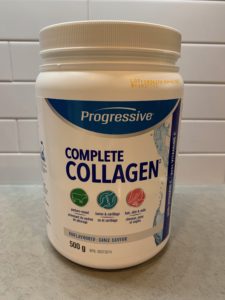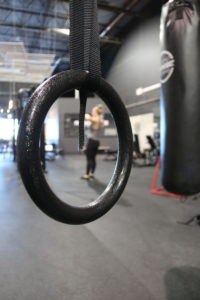The collagen hype
Collagen is a popular supplement in both the beauty and sports industries. It is credited for improving body composition, reducing pain and slowing degenerative diseases such as osteoarthritis. In addition, it’s also the main structural protein in your skin – hence why it’s marketed as a beauty product. You have likely seen collagen advertised in skin creams and capsules to improve the appearance of wrinkles, adding moisture and decreasing signs of aging. Although marketed as “fact”, these benefits are yet to be determined.
What is collagen?
Essentially, collagen is simply a combination of amino acids (proteins). Collagen and a traditional protein source (i.e. chicken) have one main difference: collagen contains only a fraction of the nine essential amino acids. In comparison, chicken contains all 9 essential amino acids (essential amino acids are the proteins that our body can NOT make on our own). However, the amino acids that collagen does contain are the ones that are needed to make tendons (attach muscle to bone) and ligaments (attach bone to bone).
Collagen and sport
In terms of sport, collagen has been gaining popularity in the rehab scene. During a ligament/ tendon injury, having more of the specific proteins that make-up tendons and ligaments could help speed-up repair. These proteins could be in the form of a collagen or casein (a protein found in cow’s milk) supplement.
Why tendons/ ligaments heal so slowly
The repair process can traditionally be quite slow because tendons and ligaments do not have a great blood supply. Having a low blood supply is an issue because healing nutrients are generally carried throughout the body in the blood. Therefore, ligaments and tendons naturally receive lower amounts of healing nutrients, leading to longer recovery times. Exercise is one way to increase blood flow throughout the body- including getting more blood to ligaments and tendons.
It has been shown that taking a collagen or casein supplement increases the proteins in the blood, needed for ligament and tendon repair. It is then suggested that exercising while these proteins are present in the blood could help deliver these proteins to those ligaments and tendons. HOWEVER, it is still unknown as to whether or not our ligaments and tendons are actually using those available proteins.
Achilles tendinopathy
To get more insight into the benefits of collagen supplementation, participants with Achilles Tendinopathy (AT) were recruited for a study. Over a six month program, participants with AT followed an exercise program and either did or did not (control group) consume collagen. Here, pain was reduced and function was increased in the participants who took the collagen supplementation + had an exercise program compared to the control group. This is very promising work, pointing in the direction to support collagen supplementation.
(p.s. check out this article where I discuss ways to improve joint health)
Conclusions
It seems very promising that ligament and tendon injuries can be improved with collagen or casein supplementation. However, this is not yet proven, as many studies have only reported blood samples and not the actual tendon properties. There also do not seem to be any drawbacks to collagen or casein supplementation.
While taking collagen, it is important to keep in mind that collagen is not a complete protein source. In order for your body to build muscle, you must consume all 9 amino acids – collagen is lacking five of these. However, collagen can be beneficial for specific tendon and ligament repair. Ideally, collagen or casein should be consumed 30-60 minutes prior to exercise. It is at this time where the key proteins in collagen and casein show-up in the blood. While these proteins are highest in the blood, exercise can help send these proteins to your ligaments and tendons to aid in repair.
Amanda Regnier
Running Coach, MSc. Strength and Conditioning, C.S.C.S
Movement Specialist (FRC®)
Coach Mary comments: I learned about collagen last year when Coach Amanda was adding it to her tea and I asked her what it was all about. When my broken toe was healing I decided to give it a go and bought a tub of it. This is the product I used and am still using.

